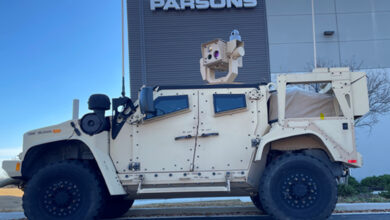
What makes a good wing commander? Is it their vision for the future of the wing, knowledge of the mission, or operational expertise? Their commitment to Airmen, relationships with the community, and ability to remove barriers and steward resources to complete the mission? Do the traits that make a good wing commander change based on the wing’s mission?
According to US Air Force Instruction 51-509, “only line of the [Air Force] officers with a current aeronautical rating … may command flying units,” asserting that all other competencies are subordinate to that singular distinction.
In a volatile environment with shrinking resources and intensifying great power competition, the US Air Force has limited the pool of eligible officers to those with aeronautical ratings, disqualifying 57 percent of its officer corps from leading the most critical power projection units of the air force.
Diversity and Inclusion
Diversity and inclusion are not just about race and gender. These foundational concepts further include the cognitive variability imparted from different functional backgrounds.
For years, senior leaders insisted that a more diverse air force is stronger and more innovative, but limited efforts to race and gender, ignoring the functional diversity of commanders at the ranks of colonel and above.
As the Chief of Staff of the Air Force wrote in a January 12 letter to the force, “in the Information Age and the modern battlefield, a culture of teamwork that integrates everyone’s diverse abilities, talents, and ideas is essential to maximize and deliver meaningful results.”

When a disproportionate number of wing commanders and general officers come from the same functional background, the leadership team lacks the cognitive diversity needed to arrive at the most informed and innovative solutions.
Ninety-one percent of rated officers are male, over-representing the 77 percent of officers and 79 percent of enlisted personnel that are male. As we develop a culture dedicated to promoting respect and inclusion, female and minority officers and enlisted personnel must see senior leaders that look like them.
Disqualifying career fields that are relatively more diverse than rated career fields actively undermines that effort. As diversity of thought creates the foundation for an agile command team, it is crucial to appreciate how officers’ formative experiences build their professional competencies.
Leadership Competence
One of the most critical factors in developing an individual’s leadership competence is experience in meaningful leadership roles.
According to data presented in the April 2017 Air Force Leadership Diversity research report, maintenance and mission support officers garner 88 percent more experience than their rated counterparts in the key leadership positions of flight, squadron, and group commander.
Additionally, maintenance and mission support officers lead flights, squadrons, and groups that are considerably larger and more diverse than those within the operations groups, creating a greater number and scope of leadership-testing scenarios to navigate early in their careers.
Furthermore, non-rated officers typically have more enlisted personnel within their units, exposing them to a wider range of officer and enlisted personnel issues that a wing commander may be responsible for addressing.
If the leadership experiences of rated officers are not inherently superior to non-rated officers, are there other considerations that make it useful to exclude non-rated officers from commanding flying wings?
Commanding a Flying Wing
Air Force Instruction 51-509 states, “If the commander does not meet the eligibility requirements for command of a flying unit, consolidate flying activities under the supervision of a subordinate officer who does meet such eligibility requirements.”
If this consolidation has already been accomplished via the standard wing structure — where two levels of competitively-selected, aeronautically-rated squadron and group commanders are accountable and responsible for the wing’s flying operations — then why does the aeronautical rating of the wing commander matter?
Wing commanders spend most of their day not focused on flying operations. In fact, they do not spend most of their day focused on maintenance activities, mission support activities, or medical activities. They have similarly competent commanders with appropriate functional backgrounds to manage the non-flying operations as well.

The wing commander’s sight picture must be above the functional fray, and in-depth management of any specific functional area may distract them from the specific leadership roles that are unique to their position and cannot be delegated to subordinate commanders.
Even if it is accepted that rated group and squadron commanders can manage a wing’s flying operations effectively, one may argue that the senior leader of a flying wing needs to have developed within a rated career field to have the requisite understanding of how that wing’s primary weapon system is employed and what challenges its operators face.
This argument assumes that highly competent non-rated officers who have already completed successful squadron and group commands cannot learn enough about flight operations to command a flying wing.
On the other hand, rated officers command many air base wings, implying rated officers can learn enough about mission support and medical operations to be ultimately accountable and responsible for the primary missions within an air base wing.
Given the considerable intellect and professional military education all line officers have garnered by the time they reach the rank of colonel, it is illogical and hypocritical to suggest that senior non-rated officers, who have already been leading multi-functional teams for 15 to 20 years, can’t be expected to understand how a particular weapon system is employed to the level of depth needed to represent a flying wing and lead its operators.
Additionally, if we encourage our wing commanders to employ intent-based leadership and give mission orders, vice micromanaging via authoritarian decrees, the commander’s detailed understanding of a specific weapon system’s employment is of negligible importance to their effectiveness at commanding a flying wing.
Commanding an Air Base Wing
This year, the Air Force’s Command Screening Board, which chooses wing commander candidates, introduced a change that reserves air base wing command for non-rated line officers only.
While this change represents a more equitable view of colonels’ leadership capabilities, it reiterates the artificiality of disqualifying colonels from commanding wings whose primary missions are different from the units in which those colonels served earlier in their careers.
If leadership is the most important competency for the senior commander of a wing, then the best-rated officers should be capable of commanding an air base wing effectively, and the best non-rated officers should be capable of commanding a flying wing effectively.
In either case, wing commanders should be expected to rely on the experience and counsel of their functionally aligned squadron and group commanders, as well as their vice commander and command chief, to create the optimal leadership team.
The US Air Force is smaller in numbers than it has ever been but is expected to solve complex problems generated by strategic competition at an ever-increasing pace.
Per the Chief of Staff of the Air Force’s Accelerate Change or Lose vision, winning in this century requires us to challenge our most basic assumptions, including which officers are best suited to command flying wings.
 Lt Col Chris Carnduff is a National Defense Fellow with the US Department of State.
Lt Col Chris Carnduff is a National Defense Fellow with the US Department of State.
He is a career US Air Force officer with deployed tours in Afghanistan, Iraq, and Qatar.
Most recently, Lt Col Carnduff commanded civil engineer squadrons in Air Mobility Command and Air Force Global Strike Command.
The views and opinions expressed here are the author’s alone and do not represent those of the US Air Force, the Department of Defense, or any part of the US government.
The views and opinions expressed here are those of the author and do not necessarily reflect the editorial position of The Defense Post.
The Defense Post aims to publish a wide range of high-quality opinion and analysis from a diverse array of people – do you want to send us yours? Click here to submit an op-ed.











